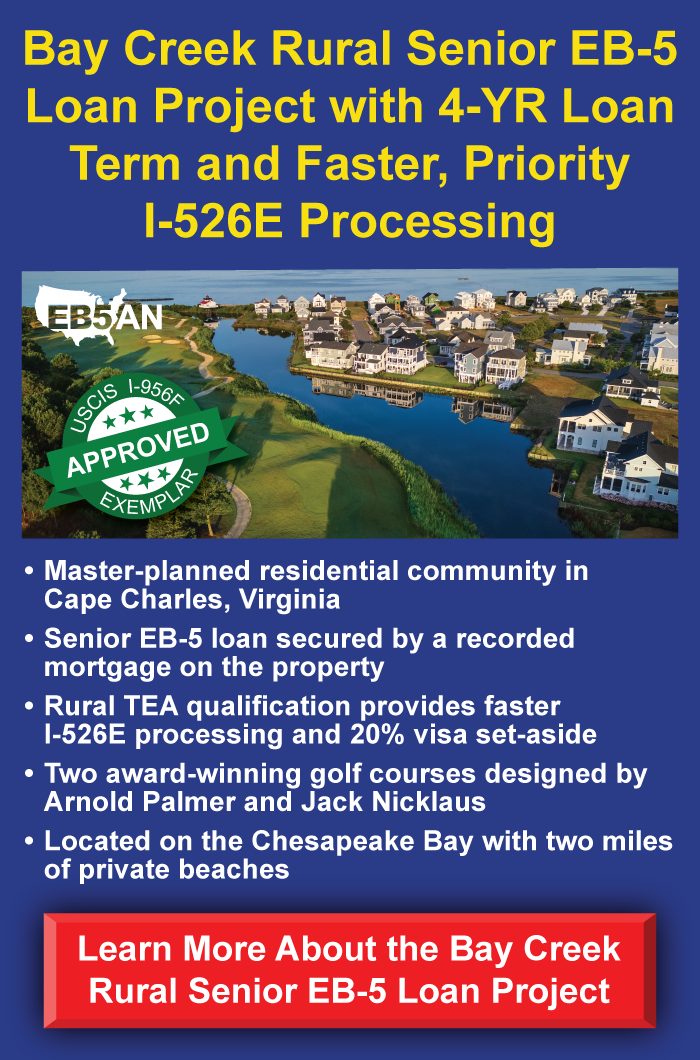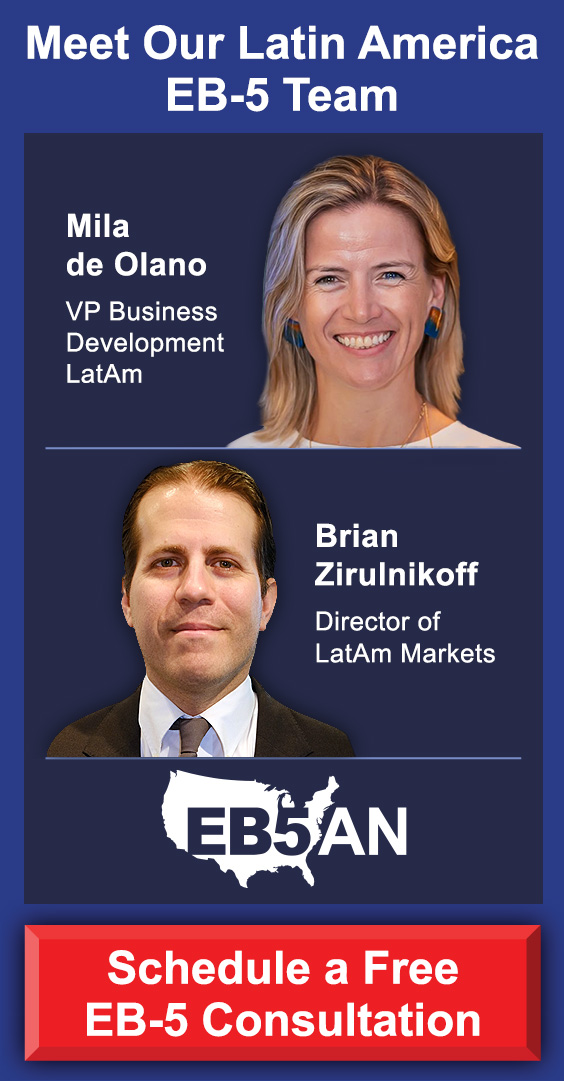The EB-5 Immigrant Investor Program is one of the most efficient and reliable ways to obtain United States permanent residence status—commonly known as a U.S. Green Card—and, in many cases, can even be a pathway to eventual United States citizenship. The goal of the EB-5 program is to stimulate economic growth and job creation in the United States by attracting foreign investment capital. Eligible investors, along with their spouse and dependent family members under the age of 21, can live and work in the United States during the entire EB-5 application process while they earn a U.S. Green Card.
Choosing the right type of EB-5 project in which to invest the necessary capital to qualify for a visa is crucial. Since each applicant’s individual situation is different, a wide variety of factors can play a role in investment choices. Knowing what a high-quality EB-5 project looks like is very important, but it can be complicated. Prospective investors should do everything in their power to understand all of their options, which includes doing their proper due diligence and working with experienced immigration attorneys and EB-5 program experts.
This article will explain what EB-5 investors need to consider when choosing an EB-5 project, identifying investment options, strategies, and structures that will deliver on their individual immigration goals.
What to Do Before Beginning the EB-5 Visa Process
What to Consider When Choosing an EB-5 Project
- Investing Directly or Through a Regional Center
- The Benefits of Investing in a Project Located in a Targeted Employment Area (TEA)
- Performing Due Diligence
- Choosing an EB-5 Investment Structure
Invest in the Best EB-5 Projects With EB5AN’s Regional Center Network
What to Do Before Beginning the EB-5 Visa Process
The first step in the process of obtaining a Green Card through the EB-5 program is investing the necessary capital in a qualifying project, which is called a new commercial enterprise (NCE). If the investor’s NCE is located in a targeted employment area (TEA), then the minimum investment amount is $800,000. Otherwise, the required minimum foreign investment amount is $1,050,000. Targeted employment areas (TEAs) will be explained in more detail later in this article.
Importantly, making a successful EB-5 investment in an NCE requires that the investor properly gather all supporting documentation, which can take several weeks. Working with experienced EB-5 program experts and immigration attorneys is essential when making sure that all documentation is accurate and complete.
What to Consider When Choosing an EB-5 Project
There are several considerations that EB-5 investors need to take into account when choosing the type of EB-5 project that’s best for them.
Investing Directly or Through a Regional Center
EB-5 applicants can choose between a direct investment or investing through a regional center. A direct investment involves contributing capital directly to a new commercial enterprise (NCE) and requires active, long-term involvement in managing the NCE. In contrast, EB-5 regional centers are entities designed to pool funds from multiple investors and manage those funds on their behalf. For the vast majority of EB-5 investors focused on securing a U.S. Green Card efficiently and with reduced financial risk, EB-5 regional centers are the preferred choice.
Investing through EB-5 regional centers provides several benefits. These USCIS-designated entities can submit exemplar petitions for their investment projects, streamlining the approval process. Once a project is approved, subsequent applications tied to that project—excluding the personal info parts—automatically receive approval, significantly reducing processing times for Green Card applicants.
Another key advantage of EB-5 regional centers is the ability to count indirect and induced jobs, as determined by economic modeling, toward the requirement of creating jobs for U.S. workers.
This flexibility simplifies meeting the program’s job creation criteria, making EB-5 regional centers an efficient and reliable pathway for many applicants.
What to Look for in High-Quality Regional Centers
The best regional centers have several traits in common that make them low-risk, high-reward options for EB-5 investors. These common characteristics of successful regional centers include:
- A track record of success.
- A high rate of Form I-526E and Form I-829 approvals.
- A reliable record of investor repayments.
- A strong emphasis on transparency and investor communication
- A lack of previous compliance issues.
- A large number of EB-5 projects delivered.
The Benefits of Investing in a Project Located in a Targeted Employment Area (TEA)
In addition to making an EB-5 investment through a reputable regional center, investing in a project located in a targeted employment area (TEA) is another helpful strategy for getting a Green Card more quickly and with less risk. As previously mentioned, choosing to invest in a targeted employment area (TEA) lowers the minimum required investment amount from $1,050,000 to just $800,000. A TEA is either a rural area of the United States with a population of fewer than 20,000 people, or one with an unemployment rate that is at least 150% of the national average.
TEA investors also benefit from a special quota of reserved visas because U.S. Citizenship and Immigration Services (USCIS) sets aside about one out of every three of the limited number of available EB-5 visas in a given year specifically for investments in TEA projects, as well as a small number of infrastructure projects.
For most investors, choosing an EB-5 project located in a TEA in a rural area is the best choice, due to the extra benefit of priority processing by USCIS.
Performing Due Diligence
Foreign nationals considering EB-5 projects should carefully evaluate several key factors as part of their due diligence. A thorough assessment ensures confidence in the success of the project and in certainty that the project qualifies for all requirements of the EB-5 visa program. This due diligence should always include:
Examining the Project Leadership
Understanding who is managing the project is critical. EB-5 investors should investigate whether regional center management and project developers have successfully delivered EB-5 projects in the past, and whether they have experience handling large-scale investments. Additionally, analyzing how much capital the developer has contributed to the project can indicate their level of confidence in the project’s success.
Analyzing the Business Plan
The project’s business plan should be financially sound and should clearly explain how it will create jobs—specifically, the required 10 new jobs for U.S. workers for every qualifying EB-5 investor. A strong business plan is typically supported by a mix of funding sources, such as bank loans, mezzanine loans, and equity funds. Foreign investors should also evaluate whether the plan withstands stress tests and includes contingency plans for changing market conditions. Importantly, the plan should outline a viable exit strategy, such as repayment through profits, asset sales, or refinancing.
Assessing the Project’s Current Status
The project’s current status can provide valuable insight into its long-term viability. Investors should verify that the project is approved by U.S. Citizenship and Immigration Services. Some projects may already be underway and may have already created the necessary 10 jobs per EB-5 investor, meaning the project investors will meet one of the EB-5 program’s key criteria immediately. Additionally, understanding the expected completion timeline is vital for aligning with an individual’s personal financial and immigration goals.
Evaluating Guarantees
Certain regional center projects offer third-party guarantees to mitigate risks if the project does not ultimately meet EB-5 program requirements. These guarantees may include approval of the investor’s I-526E petition, job creation assurances, or construction completion guarantees. Such safeguards can provide additional security for EB-5 investors and their families.
By carefully examining all of these important factors, investors can make better-informed decisions about their EB-5 projects, ensuring a smoother path toward obtaining a U.S. Green Card through the EB-5 program.
Choosing an EB-5 Investment Structure
When making a regional center investment in the EB-5 program, investors generally choose between two project financing structures: loaning capital to the EB-5 project or purchasing equity in it. Each structure comes with its own implications for risk, investment returns, and the level of the investor’s involvement in the project.
Loaning Capital to the EB-5 Project
When it comes to investments in EB-5 regional centers, the most common investment structure is loaning capital to the project. In this scenario, the investor provides capital investment in the form of a loan to the project through the EB-5 regional center and the terms of the loan specify how and when the investment will be repaid.
Loan-based investments often carry lower financial risk because the loan is usually secured by project assets or revenue streams. This structure gives investors a clear timeline for repayment and priority over equity holders in case something comes up that requires the project to be liquidated.
With loan-based investments, the investor typically receives a reliable fixed return on their investment. This is a particularly appealing option for investors whose primary motivation is obtaining permanent residency, rather than maximizing their financial returns. Similarly, loan-based investors are not required to be involved in the project’s day-to-day operations because the EB-5 regional center handles all aspects of management.
Purchasing Equity in the EB-5 Project
EB-5 program applicants who choose to make equity-based investments purchase an ownership stake in the project. In this investment structure, the investor shares in the project’s profits and losses. As a result, equity investments usually carry higher financial risk because return on investment depends on the ultimate success or failure of the project.
While they are riskier than loan-based investments, equity investments have the potential for higher financial returns if the project is particularly successful. Still, unless they plan to be involved in the project beyond the EB-5 visa process, many EB-5 investors choose loan-based investments because it offers a low-risk pathway to obtaining U.S. permanent residency quickly and reliably.
Invest in the Best EB-5 Projects With EB5AN’s Regional Center Network
Selecting the best EB-5 investments to obtain U.S. Green Cards can seem daunting, but copious guidance is available from EB-5 program experts to make the immigration process as seamless as possible.
EB5AN’s expert team has extensive experience, and offers clients first-rate, low-risk TEA projects to invest in through its robust regional center network. We have helped more than 2,700 families from 70+ countries successfully navigate the U.S. Green Card process.
To begin your family’s journey toward becoming U.S. Green Card holders by investing in a low-risk regional center project, schedule a free meeting with EB5AN today.













